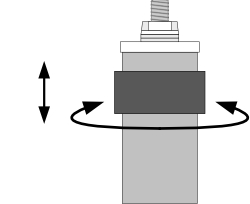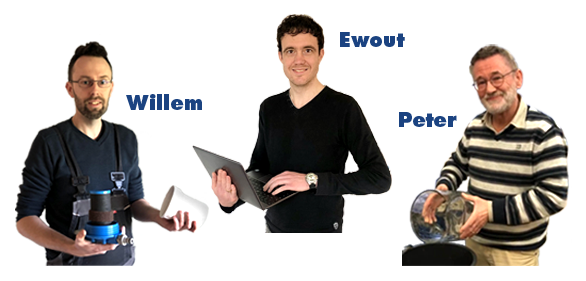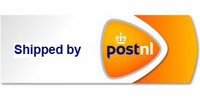The AQUA Logic Gravity filter operates using gravity: water flows slowly from the top container, through the filter, into the bottom container. Thanks to his compact size he is very popular for camping.
Emergency drinking water filter
Our water filters are being used worldwide in emergency and disaster situations where there is a lack of clean and safe drinking water. Disease caused by contaminated water is unfortunately the number 2 cause of death worldwide and even the number 1 cause of death among children up to 5 years old. Often more people die from the disaster after the disaster than from the disaster itself. With your purchase you support the work of the
IBOTA Foundation and making this water filter available to those in need.
The AQUA Logic Gravity filter is a drinking water filter designed for situations where the regular water supply is unreliable due to water pollution or contamination. The filter is capable of producing high-quality, safe, and clean drinking water. It is particularly effective in environments heavily contaminated with microorganisms, providing an excellent solution for combating waterborne diseases such as Cholera. Additionally, the filter operates without the use of chemicals and is composed of maintenance-free and corrosion-resistant components.
Suitable Water Sources for Use with Our AQUA Logic Emergency Water Filters
- Rainwater: Easy to collect and directly filter.
- Surface Water: For example, from ditches, lakes, rivers, and streams.
Tip: For optimal results, we recommend pre-filtering surface water with a cloth, such as a tea towel, to remove large contaminants.
- Spring Water: Water from natural springs, if accessible.
- Snow and Ice: Melted snow or ice can be filtered.
Note: Do not use snow or ice that is contaminated with salt or has lost its clear white color.
- Groundwater: Water from shallow wells or boreholes.
Note: If the groundwater contains iron, it can be easily de-ironed by adding oxygen to the water. This can be done by pouring the water back and forth between two buckets. Allow the water to settle so that the iron particles accumulate at the bottom. The clear water on top can then be filtered with the AQUA Logic emergency water filter.
- Rain Puddles: Water collected in depressions after rainfall. Pre-filter large contaminants before filtering.
- Condensed Water: Water collected through condensation, such as with plastic sheets or collection systems.
Note: This filter is not suitable for purifying saltwater or heavily chemically contaminated water.
Groundwater and De-Ironing
Groundwater may contain iron, which can cause a metallic taste and discoloration. You can easily remove iron from the water before filtering it with the AQUA Logic emergency water filter. Follow these steps:
- Add Oxygen: Pour the groundwater back and forth between two buckets several times. This allows the water to absorb oxygen, oxidizing the iron.
- Let it Settle: Allow the water to sit for several hours so the oxidized iron particles settle at the bottom.
- Separate the Water: Carefully scoop or pour the clear water from the top into another bucket, leaving the iron particles at the bottom.
- Filter: The clear water is now ready to be filtered with the AQUA Logic emergency water filter.
This simple method works well for water with low to moderate iron content. For water with high iron levels, additional techniques or tools may be necessary.
Taste experience
It is often said that there is no arguing about taste. Many users of this water filter find that the filtered water tastes better. Especially when there is chlorine in the water, this is reduced by the activated carbon and the taste is greatly improved. However, there are also users who find the filtered water less tasty. In the core of this water filter it is intended to provide clean and safe drinking water in emergency situations.
Filter characteristics 3-in-1 CS-Ultra Filter Element
1. Activated Carbon cylinder with a pore size of 1 micron
Activated carbon is organic material (coconut shell) and has a very high adsorption capacity for odours, colour, taste, metals such as lead, as well as yeasts, chlorine, pharmaceutical residues, and other chemicals.
2. Nano Silver Impregnation
Nano Silver is applied to the activated carbon. The Nano Silver coating inhibits the growth of bacteria and microorganisms in water, and helps to prevent microbial growth in the filter element. This effect is achieved as the Nano Silver particles disrupt the cell walls of microorganisms and impede their reproduction, significantly reducing the risk of water contamination and the spread of pathogens. This allows you to enjoy high-quality water with increased safety and purity.
3. Ultrafiltration membranes with a pore size of 0.01–0.03 microns
Ultrafiltration membrames providing effective filtration against:
• Pathogenic organisms: Bacterial reduction of >99.9999% (including Cholera, Shigella, Typhus, Klebsiella terrigena, Enterococci, Legionella, and E. coli)
• Cysts/Protozoa: (including Giardia and Cryptosporidium)
• Micro- and Nano-plastics: Removes particles as small as 0.03 microns (30 nanometers)
How to use
 1. Marking the Filter First Use Date
1. Marking the Filter First Use Date
Use the supplied date sticker to note the date of first use. Stick it visibly on the one of the water containers. The adviced service life is 1 year; the actual lifespan of the filter element may vary depending on the degree of contamination in the source water. As long as water continues to flow through the filter, it is safe to drink, even if the flow rate decreases.
2. Installing the Filter Element
Insert the filter outlet with one sealing ring attached, through the hole in the bottom of the top water container. Place the second sealing ring on the outlet from below and tighten the nut securely.
3. Assembling the System
Assemble all parts of the filter system. Stack the two water containers. Fill the top container with water to purify. After a few minutes, water will begin dripping into the bottom container. As the water level in the upper container decreases, the flow rate of the filtered water will also decrease.
Ready for Use
If sufficient water is available, it is recommended to not use the first batch of filtered water (ca. 5 liter) for consumption. After that, the filter is ready to provide clean and safe drinking water.
Note: Always use the most clean water source that is available and preferably use the filter in a clean environment.
Maintenance
Removing Sediment Layer
A thin layer of water containing settled particles may remain in the upper container. This is normal. Sedimentation removes undissolved particles by allowing heavier materials to sink. Always discard this settled water layer when refilling the reservoir.
Cleaning the Filter Element
If the water flow slows down, the filter can be cleaned easily:
- Using the integrated Cleaning Pad, the filter surface can be firmly sanded clean (see image beside).
- Rinse the actived carbon surface. Make sure only clean water touches the water outlet. As a precaution, do not use the first liter of filtered water for consumption.
Cleaning the Water Containers
Clean the water containers regularly by washing them with water and soap.
Storage after Use
Wet Storage (1–4 weeks): Disassemble the filter element. Store it in a sealed container or bag, preferably in the refrigerator.
Dry Storage: Let the filter air-dry in a clean area. Drying near a heat source, such as a radiator or in sunlight, is recommended — but avoid direct contact between the heat source and the plastic parts, as this may cause damage.
Note: When the filter is put back into use, it may take some time before the water flows through properly. As a precaution, do not use the first liter of filtered water for consumption.
Shelf life and Life Span
Unused, the filter has an almost unlimited shelf life (store in a cool, dry and dark place). The adviced service life is 1 year; the actual lifespan of the filter element may vary depending on the degree of contamination in the source water. As long as water continues to flow through the filter, it is safe to drink, even if the flow rate decreases.
Disclaimer
This water filter is designed to reduce a wide range of contaminants to levels generally considered safe for daily use. However, it may not be effective against water heavily contaminated with industrial chemicals or hazardous substances. Although water quality is significantly improved, the filter is not intended for specialized or medical use. Individuals with weakened immune systems or specific health concerns are advised to take extra precautions and consult a professional if necessary.










